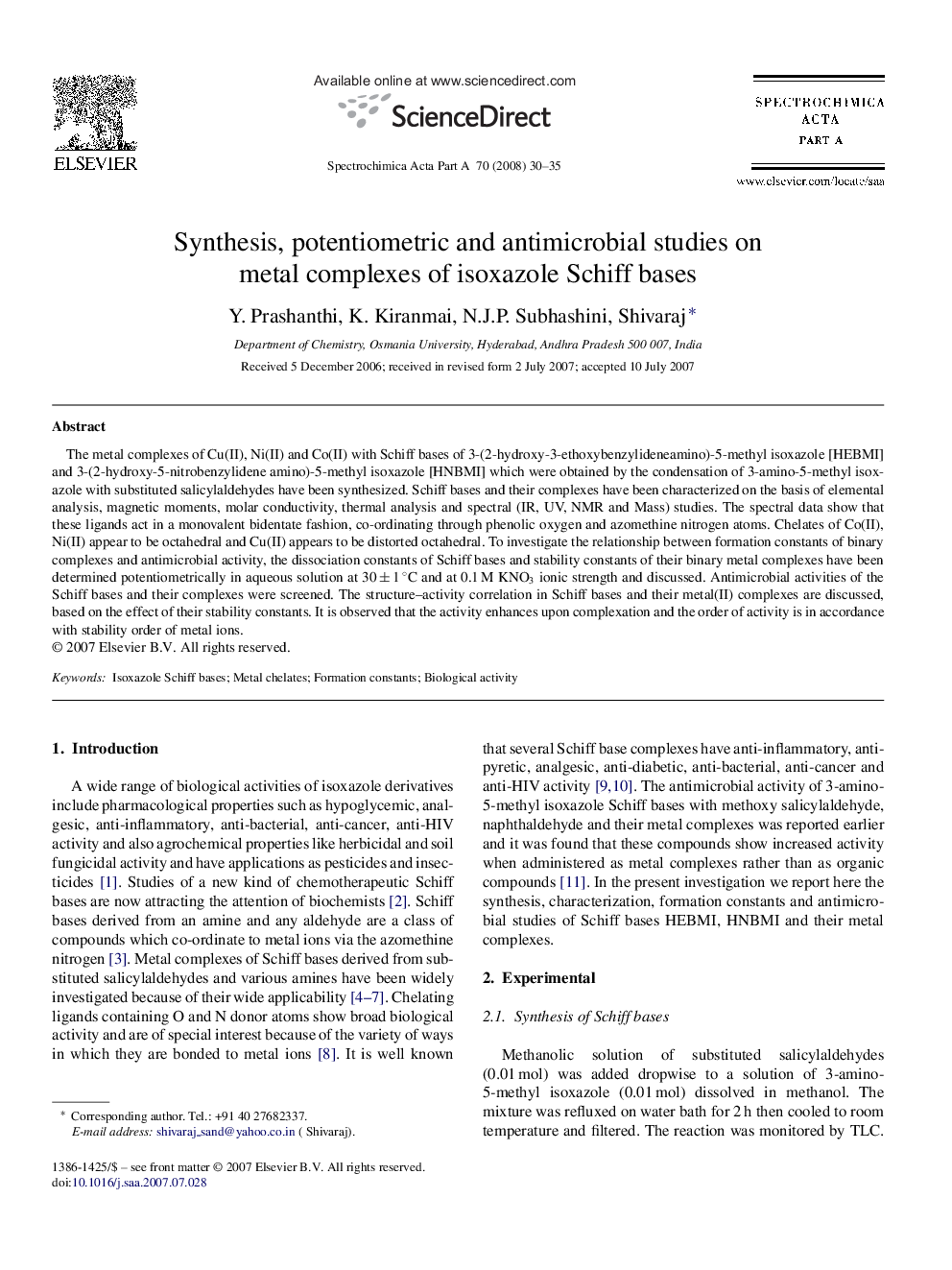| Article ID | Journal | Published Year | Pages | File Type |
|---|---|---|---|---|
| 1234910 | Spectrochimica Acta Part A: Molecular and Biomolecular Spectroscopy | 2008 | 6 Pages |
The metal complexes of Cu(II), Ni(II) and Co(II) with Schiff bases of 3-(2-hydroxy-3-ethoxybenzylideneamino)-5-methyl isoxazole [HEBMI] and 3-(2-hydroxy-5-nitrobenzylidene amino)-5-methyl isoxazole [HNBMI] which were obtained by the condensation of 3-amino-5-methyl isoxazole with substituted salicylaldehydes have been synthesized. Schiff bases and their complexes have been characterized on the basis of elemental analysis, magnetic moments, molar conductivity, thermal analysis and spectral (IR, UV, NMR and Mass) studies. The spectral data show that these ligands act in a monovalent bidentate fashion, co-ordinating through phenolic oxygen and azomethine nitrogen atoms. Chelates of Co(II), Ni(II) appear to be octahedral and Cu(II) appears to be distorted octahedral. To investigate the relationship between formation constants of binary complexes and antimicrobial activity, the dissociation constants of Schiff bases and stability constants of their binary metal complexes have been determined potentiometrically in aqueous solution at 30 ± 1 °C and at 0.1 M KNO3 ionic strength and discussed. Antimicrobial activities of the Schiff bases and their complexes were screened. The structure–activity correlation in Schiff bases and their metal(II) complexes are discussed, based on the effect of their stability constants. It is observed that the activity enhances upon complexation and the order of activity is in accordance with stability order of metal ions.
